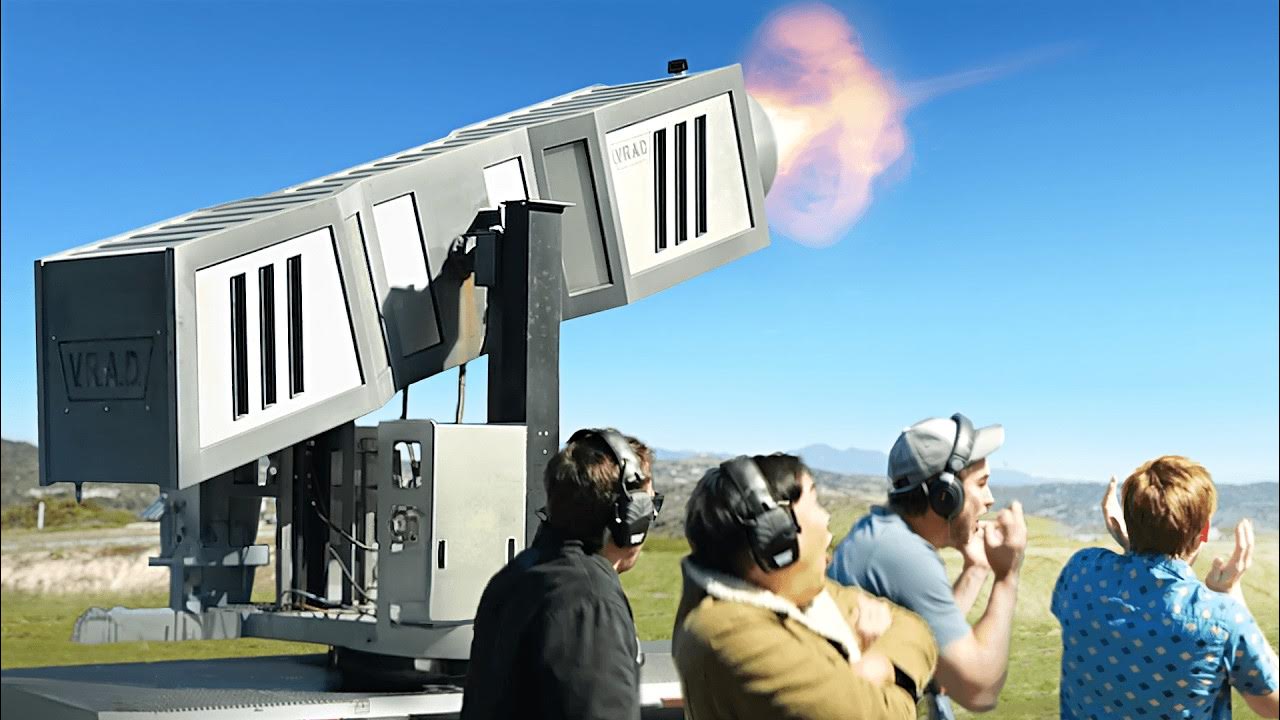I’ve enjoyed Mark Rober’s videos for a while now. They are fun, touch on accessible topics, and have decent production value. But this recent video isn’t sitting right with me
The video is here: https://www.youtube.com/watch?v=SrGENEXocJU
In it, he talks about a few techniques for how to take down “bad guy drones”, the problems with each, and then shows off the drone tech by Anduril as a solution.
Anduril aims to sell the U.S. Department of Defense technology, including artificial intelligence and robotics. Anduril’s major products include unmanned aerial systems (UAS), counter-UAS (CUAS), semi-portable autonomous surveillance systems, and networked command and control software.
In the video, the Anduril product is a heavy drone that uses kinetic energy to destroy other drones (by flying into them). Quoting the person in the video:
imagine a children’s bowling ball thrown at twice as fast as a major league baseball fastball, that’s what it’s like getting hit by Anvil
This technology is scary for obvious reasons, especially in the wrong hands. What I also don’t like is how Mark Rober’s content is aimed at children, and this video includes a large segment advertising the children’s products he is selling. Despite that, he is promoting military technology with serious ethical implications.
There’s even a section in the video where they show off the Roadrunner, compare it against the patriot missiles, and loosely tie it in to defending against drones. While the Anvil could be used to hurt people, at least it is designed for small flying drones. The Roadrunner is not:
The Roadrunner is a 6 ft (1.8 m)-long twin turbojet-powered delta-winged craft capable of high subsonic speeds and extreme maneuverability. Company officials describe it as somewhere between an autonomous drone and a reusable missile. The basic version can be fitted with modular payloads such as intelligence and reconnaissance sensors. The Roadrunner-M has an explosive warhead to intercept UAS, cruise missiles, and manned aircraft.



We’ve had that technology since the 70’s, it’s called the Phalanx system and it automatically defends naval vessels against incoming missiles.
To do this the Phalanx fires 4,500 rounds per minute. While it only has to fire for 1-3 seconds per incoming object, that’s still an ungodly number of rounds, each one about the length of your hand.
To do the same with a human operated firearm would take such a degree of luck that you may as well pray for the incoming drone to get struck by lightning.
You’re approaching the issue incorrectly, because you’re omitting cost.
For example: Russia is using suicide drones that cost a few hundred to a few thousand dollars each.
It’s not economically(or logistically) viable to fire a few hundred rounds of ammunition at every drone.
Firing a several thousand dollars worth of bullets at a missile works because the missile is at least several hundred thousand.
That’s why Raytheon developed a laser based anti-drone system. Electricity is cheaper than bullets.
It’s a lot less portable, though.
Fits on a pickup truck.
https://www.rtx.com/raytheon/what-we-do/integrated-air-and-missile-defense/lasers
Huh, only 10 kW? I thought it would be more. If it’s got a big bed, you could put the generator right there too. I don’t know how much electricity a consumer pickup engine provides, but it’s probably not that much. A quick Google suggests consumer bed outlets are about 400 W.
You’re on the right track but comparing the wrong things. It’s cost of the rounds vs the cost of not stopping the incoming weapon (ie lives and damages), not vs the cost of the incoming weapon.
Eh, the comparison is valid when the opponent can throw ten to upwards of several thousand drones at you for the cost of one countermeasure.
That works out on the water, since the thousands of bullets that missed fall “harmlessly” into the ocean. On land, we have to think about all the bullets that miss too.
Raytheon has been making a few improvements since the 70’s, like getting rid of the bullets.
https://www.rtx.com/raytheon/what-we-do/integrated-air-and-missile-defense/lasers
Pretty sure they’re self-detonating rounds
I didn’t really think human operated, I was imagining something pretty much exactly like phalanx, but with a much smaller caliber and turret size owing to the small size of drones. Like a phalanx type software controller mounted to a small turret with a small caliber machinegun or automatic shotgun type weapon.
There are enormous downsides including mechanical reliability and weight.
Raytheon is already selling a system that assists a human operator in drone targeting, then knocks them out with a laser emitter. The whole thing fits on the back of a Polaris off-road vehicle and runs on electricity. That means the ammo is a gallon or two of fuel.
Don’t forget that projectiles have to obey the laws of gravity. Firing a couple hundred rounds over a stadium in a busy city doesn’t seem like a great idea